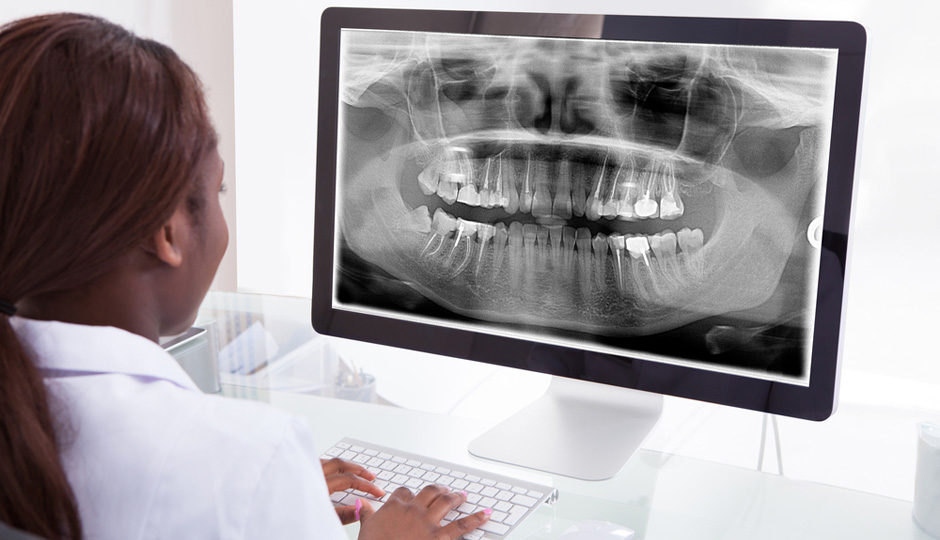Should You Worry about Dental X-rays?
For many healthy people, dental X-rays are the only time we are exposed to X-ray radiation. And, most of the time, we don’t really give it another thought. Dental X-rays are a part of routine dental care and they help your dentist diagnose, predict and prevent problems with your teeth. X-rays are the only way your dentist can see bone, tissue and hidden surfaces of your teeth. Without X-rays, your dentist cannot give you complete care. If you’ve wondered about whether or not the dental X-rays are necessary and/or dangerous, there are a few important considerations to keep in mind. First, your actual radiation exposure during dental X-rays is quite low. Second, if your dentist uses the latest dental X-ray machines, that exposure is even more minimal.
Low Radiation Exposure
Four bitewing X-rays, which is what many people get in a routine dental exam, give about .005 millisieverts of radiation, according to the American College of Radiology. That’s about the same amount of radiation you get in a normal day from the sun and other sources. While this radiation amount is already very low, it can be reduced even further with state-of-the-art dental X-ray machines. Increased film speeds and other technological advances allow modern X-ray equipment to use much lower doses of radiation. For example, The Schiff Dental Group uses digital X-rays, which use significantly less radiation – as much as 90% less than traditional X-ray equipment. Protective aprons and collars even further minimize your radiation exposure.
Guidelines for Dental X-Rays
Patients with a healthy mouth may need X-rays less frequently. Your dentist can help you determine the best X-ray schedule for your situation. Some patients who may need to have diagnostic X-rays more often include:
- Children, depending on age, who are more likely to develop cavities. Dentists are also monitoring growth and development during their developmental years.
- Teenagers, who need to be monitored for possible problems with wisdom teeth.
- Patients with extensive existing restorations (crowns and/or fillings) have an increased risk for decay to develop under these restorations, where they can’t be seen with the naked eye.
- Patients who have a high sugar intake are at an increased risk for developing cavities.
- Patients with periodontal disease may need more frequent X-rays to monitor bone levels.
- Patients with dry mouth, whether due to medications or illness. Saliva helps to maintain a stable pH in the mouth. When there is reduced saliva, the pH decreases, which contributes to cavity development.
Reduce Your Exposure with Digital Imaging
When getting dental X-rays, make sure your dentist uses a thyroid shield to cover your neck. Sometimes it’s a part of the lead apron that covers your chest, and other times it’s a separate piece. Also, look for a dentist that offers digital imaging – it is healthier for the environment and also reduces your radiation exposure by 90 percent. One of the latest technological advances in dentistry, digital X-rays are much faster than the old film-style machines. A wireless sensor is placed in the mouth, and a computer generates an image in 30 seconds as opposed to the general 4-6 minute wait time for images taken on dental film. These images can also be enhanced and enlarged to give your dentist a much more detailed and clear view.
It’s important to know the facts about dental X-rays. They are an important part of your dentist’s diagnostic toolbox and should not be avoided. Digital imaging greatly reduces your risk, is faster, and more detailed. Make your appointment to visit The Schiff Dental Group today!
This is a paid partnership between The Schiff Dental Group and Philadelphia Magazine



